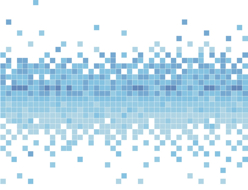Forecasting for Category and Demand Management

Think about a small town or neighbourhood grocery store and the uncanny ability those who run them seem to possess of knowing exactly what their customers need. They know that every week Mr. Brown arrives with his standard shopping list but every third week there are several additional items he picks up because his grandkids come to visit. In the summer the Jones family host a huge BBQ so the store automatically increases their orders of certain items to accommodate this seasonal event while still meeting the everyday grocery needs of the community. Of course there may be the odd unpredictable purchase of items (perhaps someone just passing through) but for the most part they are well versed in the buying patterns of their client base and plan accordingly so these items are available when they’re wanted.
Due to the scale of this type of operation it’s easier to get to know the client base and the fact that most transactions would occur face to face further facilitates this. It’s simply not realistic to expect that large-scale national or international enterprises can know their customers in the same intimate way but the ability to effectively forecast demand can assist these companies so they too can supply the right amount of product to their customers at the right time.
Forecasting is what drives supply chain planning and operations and involves the collection, analysis and tracking of data. Since data forms the basis of forecasting, accuracy is essential. So how can companies attain more accuracy?
Begin by looking at information at the item level: granularity is key. Consider items from product categories to SKUs (by customer if appropriate), locations (versus aggregate level) and time parameters. If you’re forecasting on a monthly level, what are the demand patterns?
From here items can be grouped into the following categories:
-
stable (easiest to forecast)
-
launch or end of life
-
trending (affected by promotion activities or seasonality and the hardest to forecast)
-
Other
Once the information is collected how it’s synthesized determines how effectively it can be leveraged to a company’s benefit. In this day and age it’s not enough to simply look at averages. The ability to also understand and factor in random variables and idiosyncrasies that affect demand patterns is critical. Different analytical models such as Monte Carlo Simulation and optimization (contributing factor identification, goal setting, solution identification and resource distribution) are applied to utilize the underlying data. From here more realistic benchmarks can be set looking at such things as variability and velocity, number of units demanded and geographic distribution.
Forecasting provides the basis for supply chain planning allowing businesses to better coordinate and organize activities to meet future demand. It can also be viewed as a type of early warning system that alerts companies to changes in demand patterns so they can get a head start on working on methods to meet any upcoming changes without losing momentum. It’s not exactly a crystal ball but forecasting can provide that all important “heads up” that can make all the difference.
RSVP for Change: As you work day-to-day with specific products, start to create an awareness of the trend parameters associated with each. In particular, identify which of these items are more susceptible and influenced by internal or external market conditions.
Management Insight: Many organizations realize that although they can capture the trends, they are not always able to truly leverage the “Big Data” that they receive from an ERP system implementation. Those organizations that don’t learn how to interpret and utilize this data to their benefit are in danger of being left at the side of road. Make sure you have the resources to leverage your data and create a demand driven infrastructure.
Linda Craig (@LindaCraigRSVP)
More Supply Chain insights at www.Retention.ca
